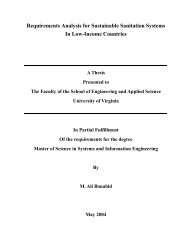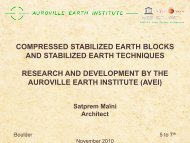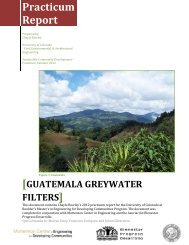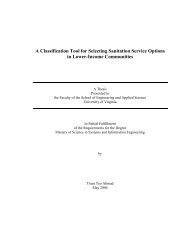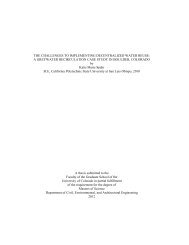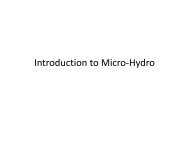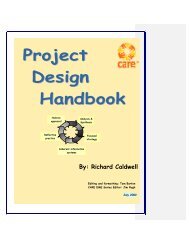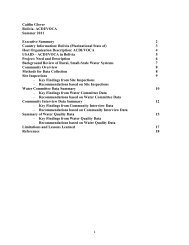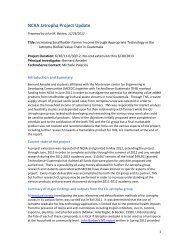SCEBs - University of Colorado Boulder
SCEBs - University of Colorado Boulder
SCEBs - University of Colorado Boulder
You also want an ePaper? Increase the reach of your titles
YUMPU automatically turns print PDFs into web optimized ePapers that Google loves.
locks <strong>of</strong>ten achieve compressive strengths comparable to ordinary concrete (ASTM<br />
E2392).<br />
Precaution should be taken when comparing testing methods for concrete versus<br />
compressed earth as a building material. Standards for testing concrete specify the<br />
specimens to be cylinders with a height to diameter ratio <strong>of</strong> 2:1 (ASTM C39). The author<br />
has found no code specifying the actual dimensions <strong>of</strong> a typical or ideal SCEB test<br />
specimen. The New Mexico Earthen Building Materials Code specifies that compressive<br />
testing is performed on a block in its flat position with the length measuring a minimum<br />
<strong>of</strong> twice the width (NMAC, 2009). The minimum compressive strength defined by this<br />
code is 300 psi. A major issue preventing the adaptation <strong>of</strong> the ASTM defined cylinder<br />
test is the preparation method <strong>of</strong> the cylinder itself. ASTM C192 specifies two methods<br />
for material consolidation (air removal) while preparing concrete test specimens: rodding<br />
and vibration. These two methods are not intended to compact the concrete. In the<br />
context <strong>of</strong> this report, soils used in SCEB production undergo high levels <strong>of</strong> compaction<br />
by means <strong>of</strong> a hydraulic press and ram. Variations in the preparation <strong>of</strong> test specimens<br />
negate any direct correlation between results achieved from concrete versus compressed<br />
earth.<br />
The durability properties <strong>of</strong> stabilized compressed earthen blocks remain<br />
relatively un-documented and yet play an important role in the life-time analysis <strong>of</strong> the<br />
applied technology. The porous nature <strong>of</strong> earthen blocks allows them to “breathe”, or<br />
absorb and desorb moisture cyclically. While this behavior is beneficial for regulating<br />
indoor humidity levels, it can lead to degrading effects on the blocks themselves. The<br />
hygroscopic nature and high relative specific surface <strong>of</strong> clay particles present numerous<br />
12



